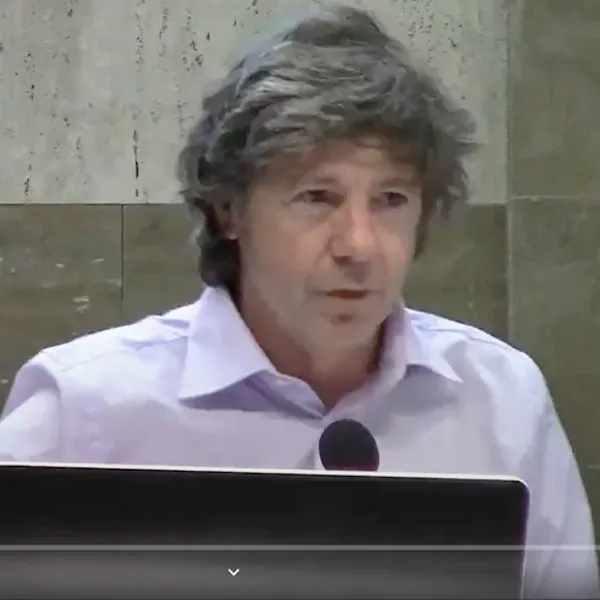This article is commentary by transform! europe’s Board member Jiří Málek. It was originally published on 15 October 2020.
The political turning point in left-wing strength within the Czech Republic was between 2016 and 2019, when, on average, the representation of the left in various representative bodies fell by half (see, for example, the results of the 2017 parliamentary elections – the ČSSD fell to 7.27% from 20.45% in 2013; the KSČM fell to 7.76% from 14.91%). This was also reflected in these regional elections. When compared with the 2019 EU elections, we see that, in the regional elections, the ČSSD managed to surpass the number of votes they obtained in 2019 (83.950 voters). The situation of the KSČM is as follows: 151.500 votes in the EU elections and 131.800 in the regional elections. What requires further analysis is whether this decrease in voters was caused by a smaller participation of traditional KSČM voters (the fixed voter core of this party makes up about 75% of voters) or by a transfer of votes to other parties or coalitions.
The question is whether the situation can be assessed as simply a defeat – or even disaster –, or whether it reflects the limited potential of this kind of “communist-cum-social-democratic” candidate. The expectation of a significantly better result is indicative of how deeply reality is ignored. Longer-term analyses show that both of the traditional left-wing parties, ČSSD and KSČM, are going through a systemic crisis (similarly to much of the left throughout Europe) and any “parametric” measures – “better” PR, “new” people, “greening”, etc. – can quantitatively affect the situation but not change it qualitatively. A closer look at the KSČM results in single regions and constituencies shows a quantitative shift towards a gradual weakening of their position. Qualitatively, it is reflected in these elections by the fact that, in many cases, the result achieved in most regions fell only slightly below the electoral limit (5%). This result does mean, however, that the party did not make it into the regional councils. A general problem, especially for the KSČM, seems to be winning over potential voters directly in the seats. There are many objective and subjective reasons for this, which will need to be analysed very critically. The KSČM is still represented in some local councils and it will be necessary to evaluate how the work of these councils is reflected in regional results. In general, the KSČM lacks enough “local” personalities, whose political authority and general knowledge can cross the borders of municipalities or districts, as well as their own political “bubbles”. Of course, even before these elections, some anti-communist tendencies could already be seen among certain political figures and in most of the mainstream media (which also links to the international situation), but this did not significantly affect the election result.
There were hardly any new candidates for the left in these elections. The new party, Skutecna Levice (a member of the Party of the European Left), put forward an incomplete candidacy in the South Moravian Region. According to its programme, this party is committed to democratic socialism (in practice, it is more of a liberal left). The campaign was limited by financial resources and, possibly, a lack of experience. It was mostly carried out through voter contact: very actively, but without any effect. It seems there is not enough “demand” among voters for this programme. Although it was the first party to officially bring a “Green New Deal” to the political campaign, it does not seem to get a response from voters.
The participation of the Democratic Green Party was a particular surprise. Some time ago, it was formed by splitting from the Greens, and it has a somewhat greater affinity for the left. Although it did not win a mandate anywhere, managing to win a total of 19,297 votes was unexpected.
In short, it does not seem possible to identify just one cause behind the election result across the Czech left. Although the political programmes of the Social Democrats and Communists differed in some areas, the overall election result did not. Some commentators point to the fact that both parties support ANO (the ČSSD as a coalition government partner, the KSČM tolerates the government), suggesting ANO may have won the votes instead. However, no specific facts are provided to support this conclusion. The results of voter opinion polls tend to signal long-term stagnation for both the ČSSD and the KSČM (in the range of 5-8%) and the danger of not getting into parliament. From this, no direct connection can be drawn between the low civic preferences for the left-wing parties and the “support of the oligarch” (aka ANO). The “transfer” of support occurred mainly during the last parliamentary elections (2017). ANO maintains a social policy that is very effective with a part of the original left-wing electorate, which it won in the last elections and keeps in these regional elections. The election result did not reflect the criticism of ANO during the coronavirus crisis, regarding some government measures and communication with citizens. The evaluation of PR activities (billboards, advertising, internet, media, interviews, etc.) shows that the social democratic candidates were better promoted on average. KSČM candidates were thus poorly promoted. There was also an assessment that the KSČM resigned from PR activities and expected its voters to come to the elections automatically.
The analyses of these results be considered the first step in the political move towards the 2021 parliamentary elections. In the coming months, the ČSSD and KSČM congresses will also be held. It can be assumed that these congresses will evaluate the current political situation and the role of the KSČM and ČSSD parties. Let’s just hope that they adopt conclusions that will at least stabilise or gradually strengthen the left’s position in the Czech Republic. As for the new left-wing representatives, unless there is a major turnaround – and perhaps a small political miracle – , it will be very difficult for them to assert themselves more significantly in the struggle for parliamentary seats.
Photo: Praga în noapte (sursă: Pixabay, CC0)
The Barricade is an independent platform, which is supported financially by its readers. Become one of them! If you have enjoyed reading this article, support The Barricade’s existence! We need you! See how you can help – here!










